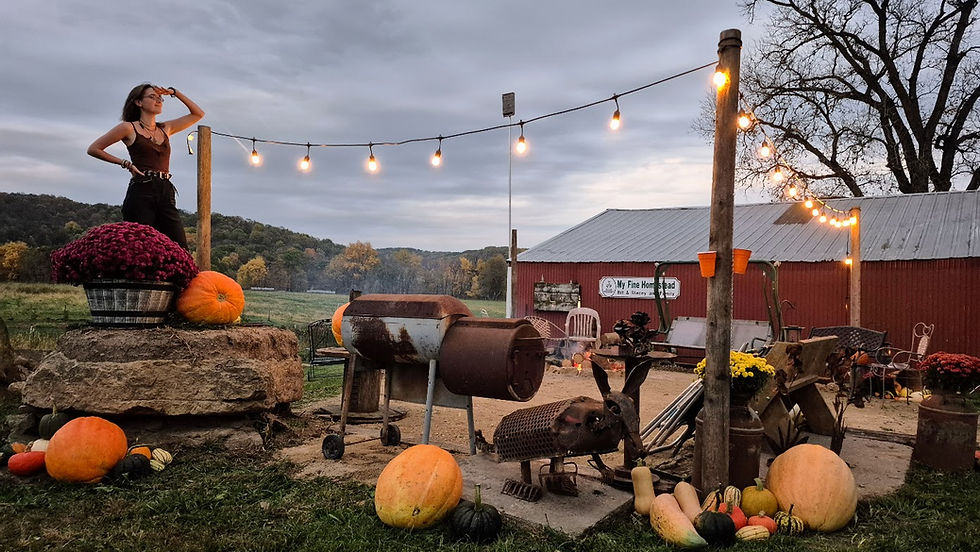Flea Beetles
- Stacey Feiner
- Aug 31, 2015
- 3 min read
On the Farm . . . what's happening this week - 8/30/15.
In field news we should have salad mix ready next week and maybe radishes also. We covered all the peppers to protect them from the cool night temperatures of the week. Peppers are definitely heat lovers, and the green fruit seems to be finally turning colors!
The flea beetles on the eggplants have been set back, but we aren't sure yet if there will be any more eggplants this season. We've also been besieged by the cucumber beetle which has decimated the rest of the cucumbers and most of the summer squashes. We have moved through our initial dismay and as perpetually optimistic farmers are making plans for how to handle these pests next year without turning to the use of pesticides. We will be utilizing row covers and anti-insect covers on many more of our crops next year to prevent the pests from finding the vegetables. We will also plant a second succession of cucumbers and summer squashes away from the original planting to rejuvenate the harvest after a few weeks and lessen the chances of a short cucumber/summer squash season.
Bill has been plowing some new areas for next year as well as getting beds ready to be planted with cover crops for the winter. Having a crop in the field over winter protects the top soil from eroding and leaching nutrients. This is essential for us in our soil building mission. We firmly believe in enriching the soil for all the soil-dwelling organisms making their home in our fields which translates into nutritious tasty produce for us all!
The colder weather of late has us reluctantly thinking and planning for winter and winter shares.
Several winters ago, longing for fresh greens from our gardens instead of the lettuce shipped from afar to our local grocery store, we decided to follow Eliot Coleman’s advice in The Four Season Harvest and start growing cold-hardy vegetables under hoophouses. The structures protect the vegetables from the cold, drying winds of Wisconsin winters.
That first winter we constructed a small high tunnel and grew mainly spinach. Since then we’ve added a larger hoophouse and several low tunnels. Last year we harvested kale, carrots, mizuna, mache (a tender specialty green with a nutty flavor common in parts of Europe) and lots of spinach. We also grew micro-greens (shoots of salad greens harvested after the first or second set of leaves develop and used as garnishes, for gourmet salads, or sprinkled over entrees).
We have learned much about protecting these crops from the winds of winter as well as refining planting dates given the shorter daylight hours of the season. This winter we’re adding a small greenhouse with minimal heat which will allow us to more consistently grow crops, like radishes, turnips, arugula and lettuce, that are more sensitive to below freezing temperatures.
What do our Winter Share Boxes look like? Our winter share offers cold-hardy vegetables and micro-greens along with the storage crops (potatoes, onions, winter squash, celeriac, beets, carrots, watermelon radishes and garlic) grown the previous fall.
•Typically there will be more items in the November and December boxes – often 6 to 9 different vegetables. A box might include: lettuce, radishes, mustard greens, squash, onion, garlic, brussels sprouts, potatoes, parsley.
•January and February boxes are smaller with 4 to 6 items. One of these might include: spinach, mache, tatsoi (an Asian green), micro-greens and onions. Root crops from the fall are included depending on the quantity left over which can vary from year to year.
•March boxes, while similar to February, start having more items with the addition of salad turnips, radishes, arugula and spring carrots for a total of 5 to 7 items.












Comments